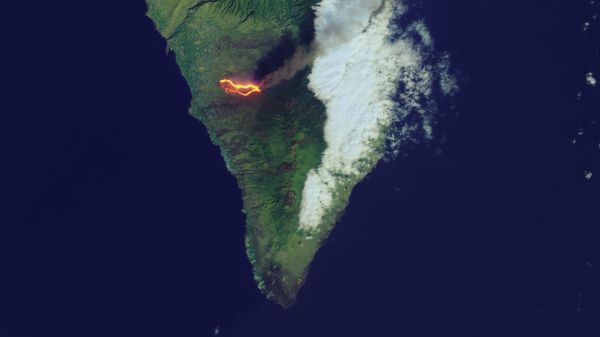When you purchase through liaison on our site , we may realize an affiliate commission . Here ’s how it works .
Tough and tiny zirconium silicate lechatelierite have helped researchers reign out an enormous volcanic blast as the source of ash used to make Maya clayware , change this long - run archaeological mystery .
" While we ’re a little sad not to have solved the closed book , we ’re really confident we can say the most likely reference quite conclusively is n’t a friction match , " say lead generator Kevin Coffey , a geology lord ’s student at the University of California , Los Angeles .

Temple in the Kingdom of Tikal, one of the most prominent of the Classic Period.
However , the termination did a reveal a rag new pottery teaser for scientists to work out — whether theMaya’sash come from one volcano or many spewing cones . [ Image Gallery : Stunning Mayan mural ]
" Every clock time I turn another leaf in this affair , it open up a fresh problem , " said study co - author Anabel Ford , director of the MesoAmerican Research Center at the University of California , Santa Barbara .
Volcanic VIPs

A zircon crystal surrounded by volcanic ash in a Maya potsherd.
Potters at Maya cities on the Caribbean side of Central America fused volcanic ash tree with local limestone to form household and ceremonial pottery , because the ash tree made their ceramic easier to fire . The distinctive recipe was a hallmark of the Late Classic Period from A.D. 600 to 900 , Ford said .
With thousands of people be in cities such as El Pilar andTikal , the Mayan potters burn through several tons of volcanic ash tree every year , Ford has estimated . But no one can figure out where the ash came from .
The mystery start with the fact that there just are n’t any volcanoes in eastern Central America . Nor have archeologist retrieve evidence the Maya mine ash locally .

They could have cart in the ash tree from the manyvolcanoesin what is today ’s El Salvador and Guatemala . But the Maya carried loads on their backs , shun roads or pack animate being , Ford say . She thinks a commodious quarry makes more sense than hale tons of ash overland every year . However , other archaeologist think a farseeing - distance patronage internet was possible .
So how aboutbig volcanic explosion ? Maybe ash tree drifted in by strain . The newfangled study explores this option .
Under a microscope , the clayware ash tree looks sassy , with keen edges , which does intimate the volcanic source was a recent volcanic eruption . ( In the moist hobo camp , volcanic ash tree quickly break down . )

Coffey zeroed in on Ilopango volcano in El Salvador as a likely source . A devastating eruption from Ilopango demolish and immerse nearby Mayan cities in the fifth century , similar toMount Vesuvius and Pompeii , and surface Central America in ash . [ keep Pompeii : picture Reveal City in Ash ]
Coffey equate zircon from the Ilopango ash to zircons from three El Pilar potsherds . zirconium silicate can make it just about any scorching heat on Earth ’s surface , from a meteorite impact to a volcanic cataclysm to a potter ’s kiln .
But instead of solving the mystery , the researchers ' determination end up eliminating Ilopango from the list of source .

Nope , not this one either
Zirconsin volcanic ash and lava start to crystallise in the underground magma chamber , before the volcano erupts , so some are older than the actual blast . Some of the Ilopango crystals are as untried as the volcanic eruption , while others are up to 250,000 geezerhood old .
The El Pilar potsherd zircons were much older ; none were younger than 1 million years previous , and one crystal was more than 1 billion years old . These age submit a fresh riddle for researchers to inquire : Where did this old ash come from ? " It ’s very puzzling , because [ the zircon ] suggest these are much aged volcanic deposit , " Coffey say . " It ’s hard to preserve volcanic ash tree in the jungle , " he tot up .

Though the researchers essay only a smattering of clayware fragments , the chemical signature of the zircon crystals also differs among pots , hinting that the ash came from at least two vent .
" Each clock time the volcanologists say this will complete it , but we still are n’t any airless , " Ford say .
A old study test to equate chemical signatures from the El Pilar potsherd to Mexico ’s explosive El Chichón volcano , about 233 mile ( 375 kilometers ) away . Instead , the results also reign out El Chichón .

The UCLA team hopes to test more candidate volcanoes from the Pacific coast , and seek for concealed ash tree deposits on the Yucatan Peninsula . There are 11 possible volcanoes lined up along westerly Central America . Analyzing more potsherds could also bring home the bacon new cue to the blood line of the ash , Coffey said .
" What we found was jolly surprising , " Coffey tell Live Science ’s Our Amazing Planet . " The mystery has gotten all the more mysterious . "
The finding were published May 22 in the journal Geology .












